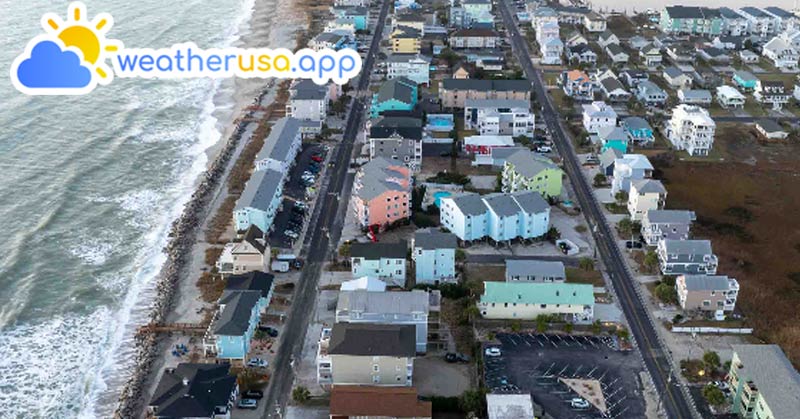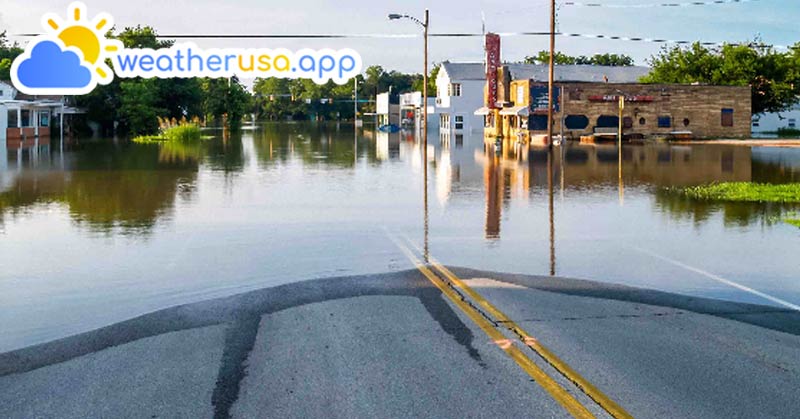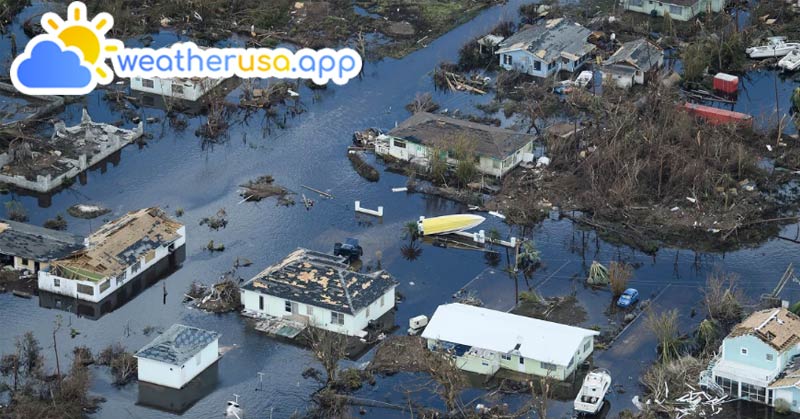
Research shows that California has underestimated the epic potential of future flooding
Research shows that California has underestimated the epic potential of future flooding.
For over a century, the Great Flood of 1862 has been one of California’s worst natural disasters—a megastorm that has served as a benchmark for state emergency planners and officials to prepare for future events.
A dreaded repeat of the flood—which killed at least 4,000 people and turned the Central Valley into a 300-mile-long sea—would likely surpass the devastation of a major California earthquake, potentially causing up to $1 trillion in damage, according to some experts.
Even as California struggles to cope with climate whiplash and increasingly extreme weather, new research suggests that future events could far exceed the magnitude of the 1862 deluge.
By analyzing layers of sediment at Carrizo Plain National Monument, researchers at Cal State Fullerton have identified two massive, unrecorded Southern California flood events within the last 600 years.
Shockingly, their analysis suggests that these deluges were far larger than the Great Flood, which reshaped much of the Central Valley and Los Angeles Basin. The researchers based their conclusions on multiple core samples taken from a “sag pond” along the San Andreas fault in southeastern San Luis Obispo County. Analysis of these samples revealed evidence of two epic floods—one occurring between 1470 and 1640 and the other between 1740 and 1800.
Notably, the core samples showed no sign of the Great Flood, suggesting it was far less consequential than the other two events.
“We’re not seeing the geological signature of what’s supposed to be the biggest event in historic time, and what we’re using as essentially the basis for a lot of models and predictions about future flooding,” said Matthew Kirby, a geology professor at Cal State Fullerton and lead author of the study.

“That’s a little concerning to us because I think we’re probably underestimating the magnitude of naturally occurring flood events, and that’s something we need to really understand.”
The findings, recently published in the Journal of Paleolimnology, add to a growing body of research indicating that Californians may be unaware of how devastating future floods could be. If such large floods have always been part of California’s natural cycle of drought and downpour, how much worse could they become in a period of climate change?
Weather forecast in 90001 - Los Angeles CA
“We look back at our history, and these massive events come along, and they’re gonna keep coming along,” said Josh Willis, a climate scientist at NASA’s Jet Propulsion Laboratory in La Cañada Flintridge, who was not involved in the research. “But global warming is almost always gonna make them worse. So, the wild ride is gonna get wilder.”
Willis found it “eye-catching” that the geological record bore no trace of the 1862 flood.
“It begs the question, ‘Why wasn’t that one in the sediment core?’ And if the answer is, well, it wasn’t big enough, ... then that’s kind of scary for the future,” Willis said.
However, he cautioned against drawing too many conclusions from a single paleoclimate study, saying it “paints one little part of the picture.” Willis noted that these two major flood events from ancient times occurred during a period of global cooling known as the Little Ice Age, which spanned roughly the 14th to 19th centuries.
“We’re looking [now] at a climate that’s not colder, it’s going to be warmer,” Willis said. “We’re heating up the planet, so comparing to the Little Ice Age may not be exactly the best analogue.”
He also noted that future floods could be worse than those in the past, as a warmer climate allows the atmosphere to hold more water. These are questions that require further research and can build on the findings from the sag pond study.
Tessa Hill, a professor of Earth and planetary sciences at UC Davis and director of the university’s Ocean Climate Lab, said the study contributes to a fuller understanding of past flood events.
“Previous work in this regard has primarily relied on coastal sediment records, which can provide very accurate and high-resolution climate records but may not capture the complexity of what is happening in different regions of California,” said Hill, who was not involved in the research.
“Understanding the past record of large flood events is critical for predicting the consequences of a changing climate for California residents,” she said.
See more: Weather Forecast For 90002 - Los Angeles CA
Paleolimnology, the study of ancient lakes, is one method researchers are using to better understand California’s past. However, there aren’t many natural lakes in Southern California, and many of the existing ones are high up in the mountains, which are not ideal locations for uncovering buried clues about past flood events.
Instead, Kirby and his team turned to sag ponds, land depressions along active fault lines that often accumulate water.
"Sag ponds may prove to be a valuable and largely untapped paleo archive," the study authors wrote.
At Carrizo Plain National Monument, the researchers extracted five core samples from a now-dry sag pond. These core samples, each measuring about 4 to 5 feet long, contained many layers of sediment—earth and biological matter washed into the lake from surrounding hills and shores, which settled at the bottom.
Changes in the type and size of the sediment indicated the energy required to erode and deposit it in the basin—the larger the grain, the more energy needed. Kirby said this helped the team identify the two significant flood events—one occurring 380 to 554 years ago and the other 284 to 224 years ago.
Kirby mentioned that the 1862 flood likely left a geological footprint in the core, but it wasn’t as significant as the two ancient floods.
"It’s not showing up in the geological archives like you would expect it to, considering its size," Kirby said. "It's not like the flood didn’t happen; of course, it happened. It was huge. But as we dig deeper into the geological record over the past 11,700 years, we can show, without question, that there’s a lot that’s happened that we have not seen in historic times."
The 1862 flood has been a key data point in creating the "ARkStorm Scenario," initially projected as California’s once-in-a-thousand-years catastrophic flood event. However, some scientists now suggest it may not be extreme enough.
“The potential floods that California may face in the future could be magnitudes worse than recent ones,” said Samuel Hippard, a Cal State Fullerton student and co-author of the study, in a statement. “Our research highlights the potential risk to millions of Californians.”
Climate and Average Weather in 90003 - Los Angeles CA
Another recent study found significantly greater atmospheric river activity over the last 3,000 years compared to recent history, suggesting that California officials may be underestimating the extent of rainfall and previous floods.
Kirby expressed his intention to continue researching this field, aiming to document more historic floods from the cores of lakes and ponds.

“It was really exciting to find that we were able to extract paleo storm events from this tiny little lake,” Kirby said. “There aren’t many lakes in California, especially in Southern California, so discovering an archive where we can find additional information is a huge boon for us.”
Kirby has identified at least three other sag ponds in Southern California for potential future research, as well as several others in the Central Valley and Northern California.
See more: Zipcode in 90005 - Los Angeles CA
“Scientists know very little about California’s flood history beyond the historical record of the past 150 years,” said Kirby, who has been studying Earth’s climate history for years. “If these sag ponds become an archive that we can explore to find these individual events, it will significantly advance our science and understanding of the history, frequency, and magnitude of past flood events.”
Weather 01852 - Lowell MA

82°
clear sky
Feels like 82°06:26/18:53
85°F
/80°F
38%
1024 hPa
7 mi
4.61 mph
